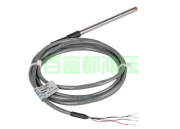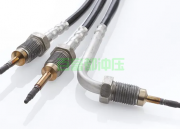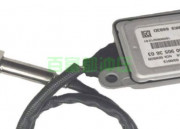Design principles and selection precautions of tensile parts
1. The design principles of the expander are as follows
1. The designed telescopic parts should make the dimensional accuracy grade and surface roughness requirements as low as possible when ensuring normal use, which is conducive to the exchange of products, reduces waste, and ensures stable product quality.
2. The designed telescopic parts should be beneficial to use the existing equipment, process equipment and process flow to deal with it as much as possible, and help to improve the service life of the die.
3. The designed tensile parts must meet the product use and technical performance, and be easy to assemble and repair.
Second, it is reasonable to determine that the punching direction should meet the following three requirements
1. Make sure that the punch can enter the die.
2. Make the area of the punch contacting the blank large. The larger the contact surface, the smaller the angle between the contact surface and the horizontal plane, and the less likely the blank is to have local stress overload, which can lead to part fracture. The mold fit improves the tensile properties of the material, and it is easy to obtain a complete punch shape, which is beneficial to improve the deformation degree of the part.
3. The resistance of each part of the pressing surface must be uniform and reliable. Uniform deep drawing is the main condition to ensure uniform and reliable feeding resistance of all parts of the material surface. In addition, the uniform feeding resistance of each part of the pressing surface is an important guarantee to ensure that the tensile part does not wrinkle or crack.
3. When choosing tensile parts, the following points should be paid attention to
1. For the production of tensile parts, try to choose a standard mold base, and the type and specification of the standard mold base determine the type and specification of the upper and lower mold bases. If you need to plan the die base by yourself, the diameter of the round die should be 30-70 mm larger than the diameter of the concave die, and the length of the rectangular die should be 40-70 mm longer than that of the concave die, and the width of the concave die can be slightly larger or equal. In order to meet the strength and stiffness, the thickness of the die base can be determined with reference to the standard die base, which is generally 1.0-1.5 times the thickness of the female die. For large non-standard mold bases, it is necessary to formulate a casting layout plan according to the actual needs, according to the technical requirements of casting and casting process requirements.
2. The selected or planned formwork must be suitable for the working platform of the selected press and the relevant dimensions of the relevant sliders, and the necessary inspections shall be carried out. If it is said that the overall size of the miniaturization of the lower die base should be at least 40-50mm larger than the size of the leakage hole of the press table.
3. The mold base material generally uses HT200.HT250 or Q235 steel, and the large precision mold mold base uses ZG35.ZG45.
4. The parallelism of the upper and lower surfaces of the die base should meet the requirements, and the parallelism is generally grade 4.
5. The middle distance of the guide sleeve and guide post device holes of the upper and lower die bases must be universal, and the accuracy is generally required to be less than ±0.02mm; the axes of the guide posts and guide sleeve device holes of the die base should be in line with the The upper and lower planes are straight, and when the sliding guide post and guide sleeve are installed, the straightness is usually grade 4.
6. The upper and lower surface roughness of the mold base is Ra1.6-0.8μm, if the parallelism can be guaranteed, it can be reduced to Ra3.2-1.6μm. Gasket: The function of the gasket is to directly accept and disperse the pressure transmitted by the bump, so as to reduce the pressure transmitted by the punch and avoid the part of the die seat from being pressed in. The outer dimensions of the pad are the same as the die, and the fixing method is selected by screws. and pinned.
During the stretching process, due to the different magnitude of the force, the thickness of the stretched part is also different. In general, the bottom center maintains the original thickness, the material at the bottom rounded corners becomes thinner, the material at the top near the upper convex edge becomes thicker, and the material at the rounded corners around the rectangular piece becomes thicker. Standard method for the size of tensile products: When designing a drawing product, the size on the product drawing should be clearly stated, and the outer diameter or inner diameter should be guaranteed, and the inner and outer dimensions should not be marked at the same time. The inner diameter calibration method of the arc of the tensile part: the inner diameter of the concave and convex arc of the tensile part and the height dimensional tolerance of the cylindrical part formed at one time are half of the standard 16-level precision tolerance (GB) and the standard 16-level precision tolerance. in plus or minus signs.
Regarding the design of the above-mentioned tensile parts, in general, there are a series of advantages such as high tensile productivity, low processing cost, high material utilization rate, simple operation, and easy realization of mechanization and automation. Therefore, the market prospect is objective, and only on the premise of ensuring the quality of the drawing parts processing enterprises can they make steady progress. I hope the above can be helpful to readers.
Read More →





















